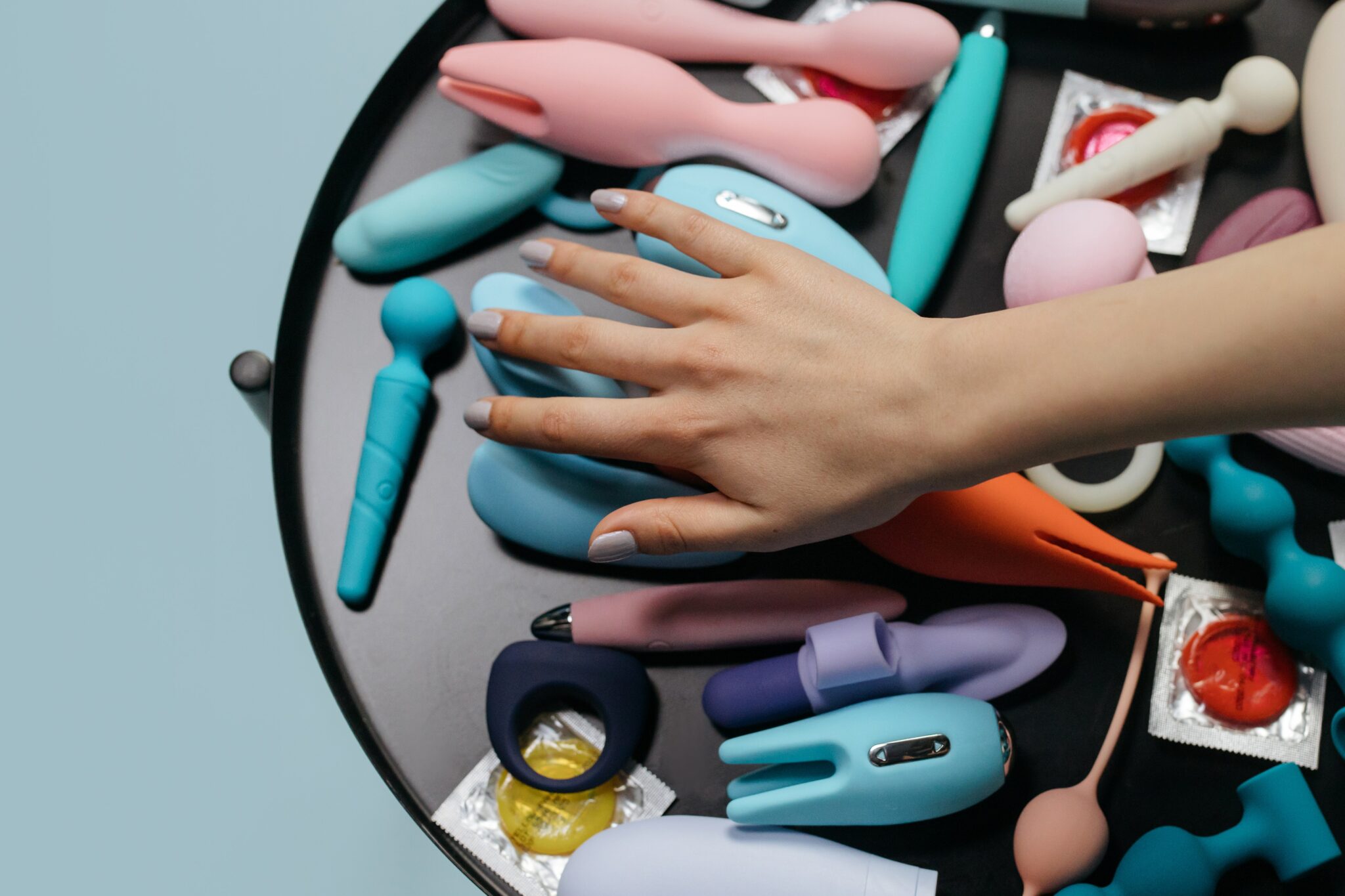Did you know that sex toys are not regulated by the government for safety? That means manufacturers can use any material – even materials that aren’t body-safe.
Sex toys can include mineral oil, toxic paints or glazes, phthalates, or other chemicals that are known to cause cancer, birth defects, and hormonal changes without you realizing it. And this is particularly concerning when you’re using them on your most sensitive bits, which have very delicate tissue with less protective properties.
Does that mean you should be afraid of or avoid buying sex toys? Not at all! You just need to inform yourself so you can select a sex toy that brings you soul-shaking pleasure and peace of mind.
Common Sex Toy Materials
Sex toys are made from many materials, including: jelly/PVC, latex rubber, silicone, TPE/TPR, glass, ceramic, hard plastic, wood, stainless steel, aluminum, and natural stone such as marble, granite, agate, and quartz. This is only a brief list, as manufacturers sometimes create a ‘new’ material and give it their own name such as CyberSkin, UR3, VixSkin, and CyberGlass.
Each material used to create toys has its own unique qualities that makes it appealing to some but not others. For example, metals and glass are hard materials that are easy to sterilize and great for temperature play, while silicone can vary in firmness, is easy to sterilize, and does not hold temperature.
What’s important to note here is that just because a material or a certain toy is popular doesn’t mean that it’s good or even safe to use on your body.
What makes a material body-safe?
For a material to be body-safe, it must not contain any chemicals that could be harmful to the human body. These toys are often made from plastics that have been softened with chemicals, most commonly phthalates, which have been linked to cancer, birth defects, hormonal changes, and chemical burns. This happens most commonly with jelly and PVC toys.
Jelly and PVC toys are most easily recognized by their crystal clear coloring and ‘squishy’ nature. Most people, especially first time toy owners, will buy these products due to their low prices, attractive colors, and soft material without realizing how dangerous they are to the body.
Due to lack of regulations, dishonest companies can label products as being body-safe when they are actually not, or claim that it’s a silicone product when it’s actually a small bit of silicone mixed with a less safe and cheaper material. Take a close look at the material composition to ensure you’re getting a pure silicone toy, not mixed with other materials.
Unsafe Materials:
- Jelly/Jelle/Gel
- PVC
- Rubber
- Sil-a-Gel
- Carba-Silicone mixes
If you’re looking for a soft, skin-like sex toy texture while avoiding porous and chemical-infused materials, medical grade silicone is perhaps the best option. There are tons of toys available in silicone from vibrators and dildos to sex dolls and anal beads.
What about porous sex toys?
A material is porous if it has holes (pores) large enough for bacteria, fungi, and mildew to get trapped in. These organisms then multiply, making it possible for you to get an infection the next time you use the product, especially if it was not properly cleaned before or after use.
While porous materials are not body-safe over time, companies are still able to market these toys as safe for intimate use because they don’t contain the chemicals mentioned above. However, you cannot sterilize porous toys or safely share them between partners, and you should always use a condom on porous toys when sharing them with a partner.
Yet, even if the material is properly cared for, organisms can still grow to levels that can cause infection after a few months. As a general rule, you should dispose of porous toys every 6-12 months. To extend the life of the material, it should be cleaned both before and after use.
You should thoroughly check any porous material for cleanliness before each use to prevent infections. If the toy develops an unpleasant odor or visible changes such as dark spots or a change in color, you should discard it immediately.
Materials that are known to be porous are TPE/TPR, CyberSkin, and UR3 – in addition to the unsafe materials including PVC, jelly, rubber, and silicone mixes above.
Non-Toxic, but Porous, Materials:
- TPR/TPE
- CyberSkin
- UR3
What materials are body-safe and non-porous?
High-quality, body-safe materials may be slightly more expensive, but the fact that they last longer and are safer for your body make them well worth the cost! Each material has its own benefit. For instance, silicone can be silky smooth to the touch and very lifelike, while glass and stainless steel can be molded into unique designs, weighted for extra sensation, or used warm or chilled for temperature play.
Nonporous Body-Safe Materials:
- Medical Grade Silicone aka Platinum Silicone
- ABS Plastic
- Aluminum
- Stainless Steel
- Glass
- Wood (This depends on the glaze)
- Ceramic (This depends on the glaze)
- VixSkin
Researching both the material and the product you’re looking at buying will help you find the best product for you.
Embracing your pleasure begins with respecting your body. Nothing kills a sexy vibe like the idea (or IRL experience) of an infection or chemical burn. Protect yourself and your partners by investing in body-safe sex toys – they’re worth the expense to prevent health concerns later on!





Great post about sex toy and keep it up.